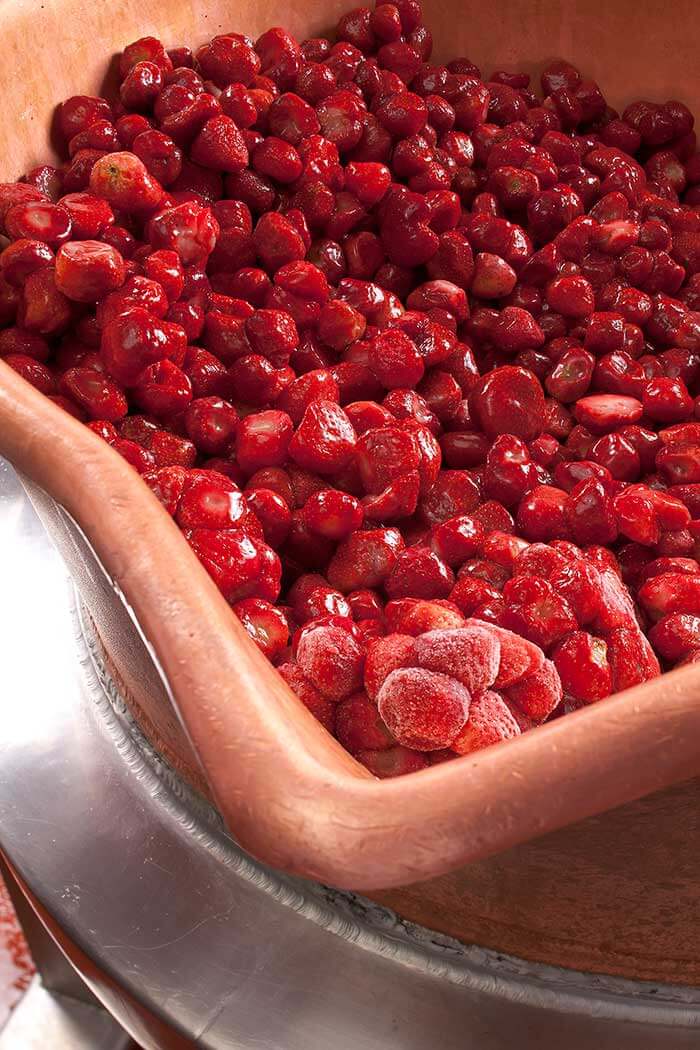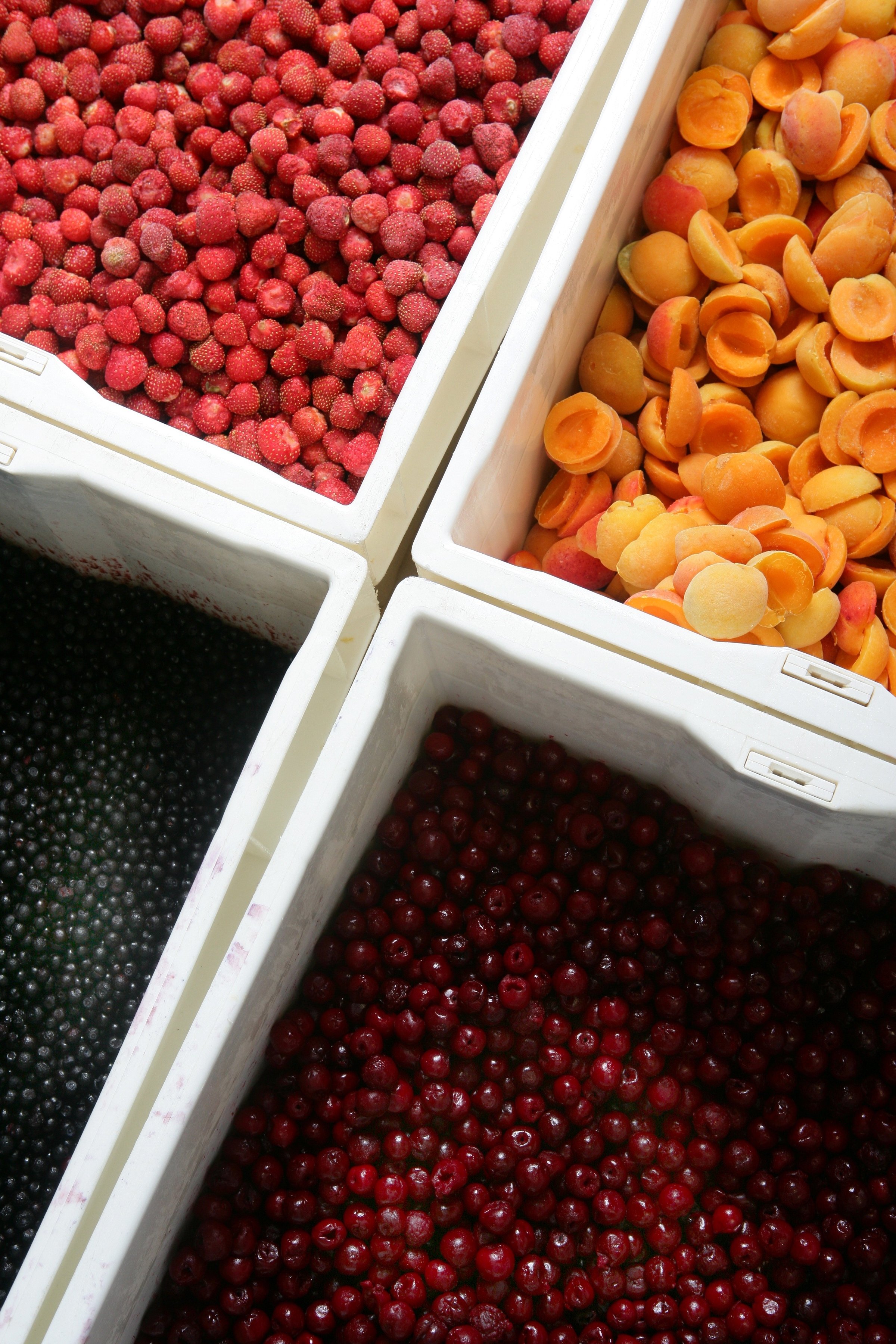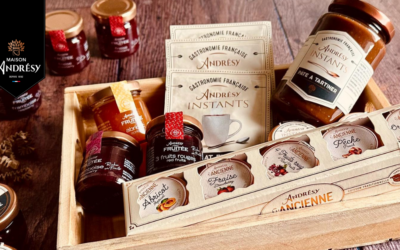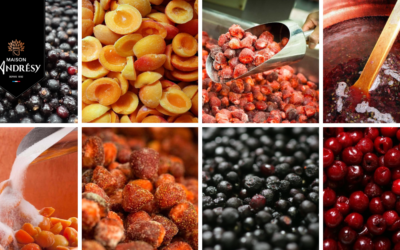Why are jam fruits undergoing a strong revaluation and shortages in 2020 ?
24
September 2020
How will your jams be impacted by the quantities of fruit harvested in 2020 and the increases in the purchase prices of jam fruits ?
The harvests of the majority of the fruits have ended in Europe and in the world and the impacts of the pandemic are catastrophic both on the quantities available and on the purchase prices practiced.
Because of the major climatic hazards this year, the difficulties of picking and maintenance of orchards linked to the pandemic, the harvested quantities have collapsed: up to -26% for golden apple, -29% for apricot, -30% for raspberry, -30% for wild blueberry, etc (source Groupe Fruits de la FIAC).
In this already problematic context, this year sales of fresh fruit have soared and their price has increased by 17% for consumers.
Fruit processors at the end of the chain are suffering the full impact of both poor harvests and exceptional fresh fruit sales : reductions in available quantities and higher purchase prices.
Andrésy Confitures provides you with excerpts from the FIAC press release to keep you informed of the jam fruit markets !
Who is the FIAC Group in relation to jam makers and what is its role ?
Created in 1997, the FIAC (Federation of Industrials of Preserved Foods), has a fruit group that brings together 45 companies, ETI market leaders or SME and TPI, which manufacture in France compotes, jams, canned fruit, but also intermediate food products based on fruit for other industries: dairy products and ice cream, bakery, biscuitry, etc..
They hold several meetings within each group per year to discuss current events, report market information and make proposals to improve the food supply and legislation.


What is the state of play of price increases and production drops per jam fruit according to FIAC?
Each year, the FIAC fruit group collects information from producers and officially communicates on fruit harvests in France, Europe and the main producing areas of the world.
The following are excerpts from FIAC’s September 2020 press release sent to the trade press and buyers in the sector, indicating the market barometer for each fruit for jam, compote or ice cream, yoghurt, etc.
“Apples : Although the French harvest is satisfactory in terms of quality (but with calibers that orient the market towards fresh), it is in sharp decline, which doubly penalizes the sector. Supplies of apples in general for the industry will indeed fall by -26% and -37% for golden apples. Faced with an unprecedented rise in prices of up to +71%, French companies must turn to imports which, in the long term, will be destructive for French agriculture, because some French appellations could disappear in favor of an expectation of price.
Strawberries : The French harvest is very insufficient to compensate for the poor harvests of other producing countries. Thus, in Morocco, the harvest took place at the beginning of the pandemic and of the containment, leading to a shortage of pickers and an additional cost of transport between Morocco and France. Strong concerns also weigh on the 2021 harvest, with a projected deficit of -25/-30%. In Eastern Europe, harvests are average due to drought. In Poland, heavy rains in June damaged the crops and volumes are down. In Spain, volumes are low due to excessive rainfall and lower than normal temperatures. Low harvests are impacting prices upwards compared to the 2019 harvest.
Apricots and Peaches : 2020 has been a very bad year for all European apricot producing countries, especially in France with harvests down -60 to -80%, in Spain with -15% and in Italy -56%, but also in Morocco. A situation due to climatic phenomena of drought, combined with the Covid crisis, in the middle of the harvest (June). The only exception is Greece, which had a good harvest, but strong postponements of purchases from the fresh market, which is usually held by France and Italy, creating pressure on prices with an average increase of 15% for canned food. The main producing country in the southern hemisphere, South Africa, also had a disastrous harvest in the winter of 2019, so several distributors, particularly British, also turned to Greece.
The same problem was encountered in the processing fishery, with a very poor harvest in Italy and Spain and rising prices.
Pears : Complicated weather conditions from flowering to harvest: late frosts and a severe summer drought. These 2 unfavourable conditions had a strong impact: a very early harvest from the beginning of August over a very short period and very small size fruits. The lack of manpower for harvesting due to the Covid crisis also impacted the yields. Following the poor off-season harvest in South Africa, the fresh market exploded the prices at unprecedented levels.
Raspberries : the harvest for the fresh market is good in France, but insufficient to satisfy both the fresh and processed product sectors. In Serbia, the yield has decreased by 50% following the rains and heat of 2019 which deteriorated the plants. They developed few fruits, which were damaged due to the heavy rains that occurred during the harvest. Prices of Serbian raspberries increased by about +20%. In Poland, although the harvest seems to be in line with forecasts, stocks of whole raspberries are zero due to the explosion in demand from frozen food professionals during the confinement period.
Blackcurrant : while the harvest is normal in France, it is down around -35% in Poland. The price of Polish blackcurrant is up by around +15% due to demand outstripping supply and zero stocks, as this is the second consecutive year of poor harvests.
Blueberries : during the crisis, blueberries could not be harvested in Morocco and world stocks are empty. Driven by strong demand from the European Union, prices for Ukrainian blueberries are currently rising sharply. On the other hand, the blueberry crop in North America is expected to be historically low.
Mirabelle plums and quetsches from the Great East : the harvest is 10% lower than expected, due to excessive heat and the orientation of the “burnt” fruit towards distillation. »
You want to know if your jam brand will be impacted by these harvest results or if your jam producer will have the necessary quantities of jam fruits for one of your flavors?
Coliseurs, what new features can you add to your gourmet gourmet baskets to keep them attractive?
 Accueil  23April 2024Parcels are highly appreciated by companies to honor their customers, by works councils for employees, and more generally by all those who receive them.Of all the different types of parcel, gourmet food baskets are an...
New: Andrésy Bio is now available! New recipes, new design… Why choose an organic jam for your establishment?
 Accueil  16April 2024Did you know that Maison Andrésy was one of the first jam makers to market an organic jam? Long before stores and consumers became aware of the benefits of organic produce, Maison Andrésy created...
Wondering which fruits are best for making jam ? Maison Andrésy, your expert in fruit sourcing, gives you its selection criteria!
 Accueil  6April 2024 In 2021, the Cassan family, who have run Maison Andrésy for 3 generations, decided that the motto of the family jam factory would be: "Sourcing the best of Nature to offer you the excellence of our know-how"....



